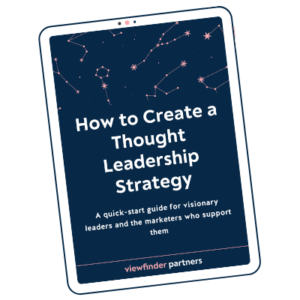This week, an email subject line caught my attention: “Insights on BCG’s 60-Year Intellectual Heritage.”
The newsletter celebrated BCG’s founder’s birthday and listed ten big ideas from the firm since its founding 60 years ago.
I’m always interested in how professional services firms market their ideas. And the concept of “intellectual heritage” stuck with me.
First, let’s think about the difference between two closely-related words: heritage and legacy.
- Your heritage is what you start with – what’s passed down to you, what you build on.
- You then create and leave your own legacy from that starting place of heritage.
Your heritage is someone else’s legacy.
In theory, you could either shape your legacy closely based on your heritage, or you could reject your heritage and move your legacy in a completely different direction.
Intellectual heritage: the ideas that came before you
So what does our “heritage” tell us?
The UNESCO World Heritage Convention was created to protect places around the world that are “of outstanding value to all mankind.” Stonehenge. The Pyramids of Egypt. The Great Barrier Reef. Those places loom large, with meaningful heritage.
Are there ideas in your firm’s history that loom large in the same way? What is your firm’s Stonehenge to protect as an inspiration for future generations?
What if:
- We encouraged job candidates to ask about intellectual heritage in job interviews to understand the culture and intellectual foundation of the firm they’re trying to join?
- Every new hire got an overview of the company’s intellectual heritage as part of their onboarding? It seems incredibly useful to get a big-picture overview of a firm’s top 5 big ideas like BCG laid out in their newsletter.
- Each incoming C-level leader reflected on the company’s intellectual heritage and set a vision for the big idea they would like to add to that heritage?
Some firms have a strong heritage that has aged well in modern times. At other firms, leaders are trying their best to move away from the intellectual heritage that has come before. But anyone shaping the company’s message or strategy should understand the intellectual heritage to move it forward.
Do you know your company’s intellectual heritage?
Thought leadership legacy: the ideas you leave behind
Once you understand your firm’s collective heritage of ideas, you can think about the thought leadership legacy you’d like to leave behind. How will future generations remember you and your contemporaries?
Your intellectual legacy is different than the work product you leave behind. Sure, people may celebrate the product you developed, the process you shaped, and the people you mentored. But what ideas will you leave behind?
Sometimes ideas develop organically and randomly. But I think it’s worth intentionally developing your core ideas to build a thought leadership platform that others can participate in, add to, and climb onto with you.
What will your intellectual legacy be? What big idea will people bring up when they hear your name?







